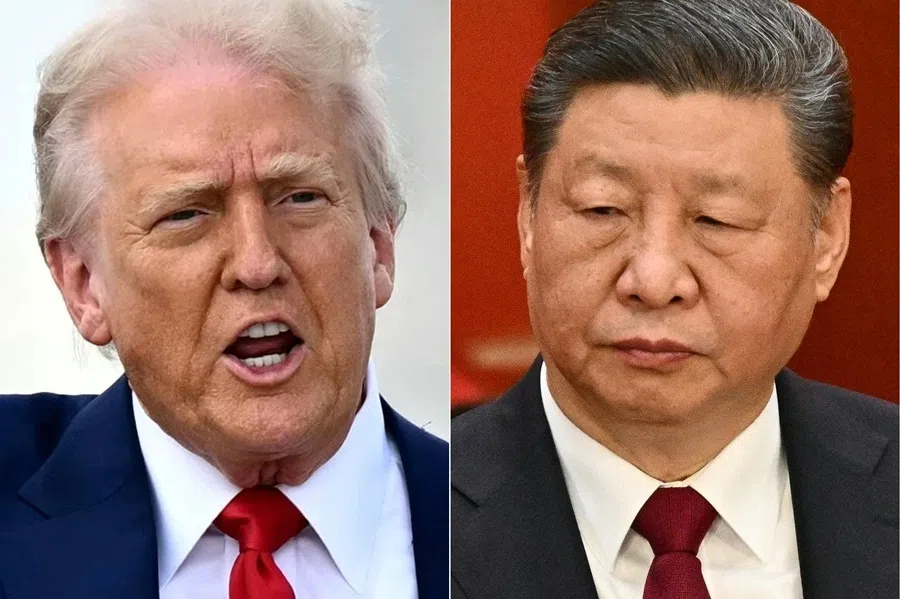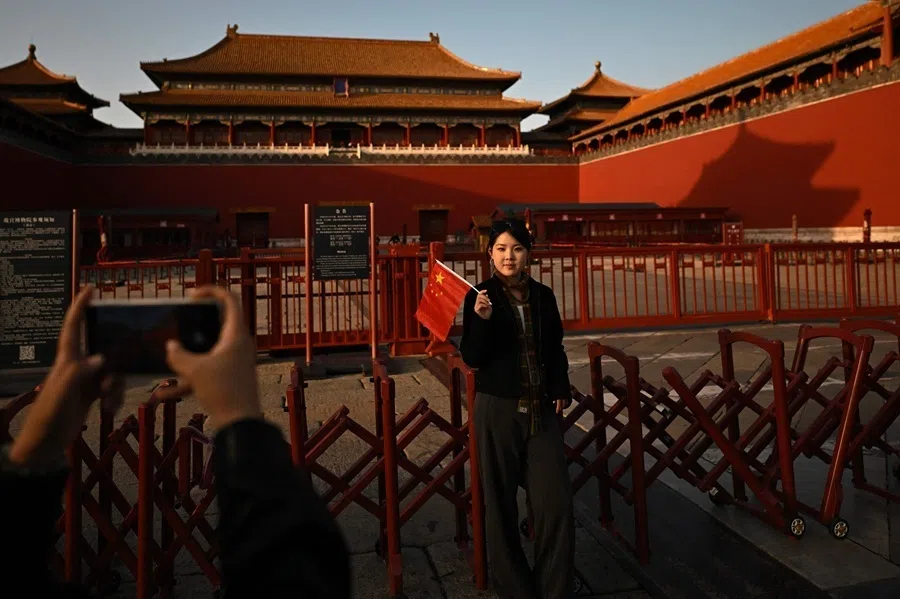After the parade: No talks, no trust, no stability
The US and China are caught in a dangerous security dilemma without sustained military-to-military engagement that could provide stability. RSIS senior fellow Drew Thompson discusses this concerning dynamic.
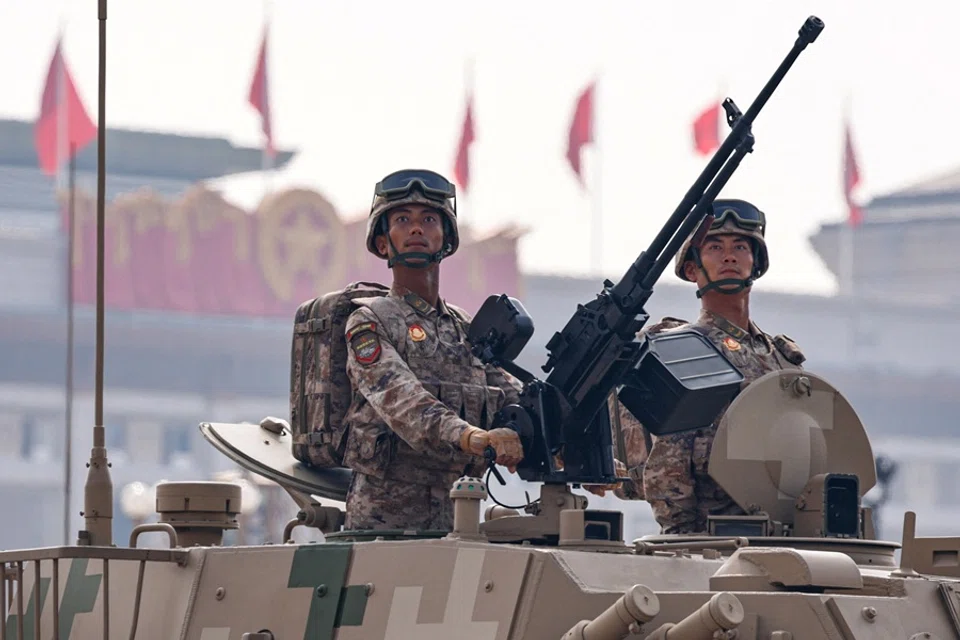
The People’s Liberation Army (PLA) parade on 3 September in Beijing was an impeccably choreographed demonstration of military might, highlighting the PLA’s discipline, loyalty to the Communist Party and most noticeably its advanced military capabilities. This show of force sent an ambiguous message to Washington, however. The US and China are caught in a dangerous security dilemma without sustained military-to-military engagement that could provide stability.
A soldier serving in the PLA in the 1990s would not recognise the PLA today, particularly the cutting-edge technology permeating the modern force parading down Chang’an Avenue. The world’s largest military buildup since World War II began in 2000 when then-Communist Party General Secretary and chairman of the Central Military Commission Jiang Zemin undertook reforms resulting in the PLA divesting itself of commercial interests and focusing on warfighting. The PLA’s budget when Jiang came to power in 1990 was US$6.16 billion, more than doubling to US$14.6 billion by 2000, when he began to hand the reins of power to Hu Jintao.
While the PLA describes its defence spending as “reasonable” and “steady” growth, the pace, scale and scope of the PLA’s expansion and modernisation since 2000 is staggering, particularly considering the low base from which it started.
A formidable PLA
By 2010, it reached US$84.9 billion, an increase of 473% over a decade. Today, the declared defence budget is US$247 billion, though the US Department of Defence estimates actual defence spending could be as high as US$450 billion. While the PLA describes its defence spending as “reasonable” and “steady” growth, the pace, scale and scope of the PLA’s expansion and modernisation since 2000 is staggering, particularly considering the low base from which it started.
A military can do a great deal with a 17-times increase in spending over a 25-year period. By comparison, the US defence budget increased 2.8 times in the same 25-year period. The parade showed Xi Jinping and the people of China how well the PLA has spent their money, and how quickly they are catching up to the US.
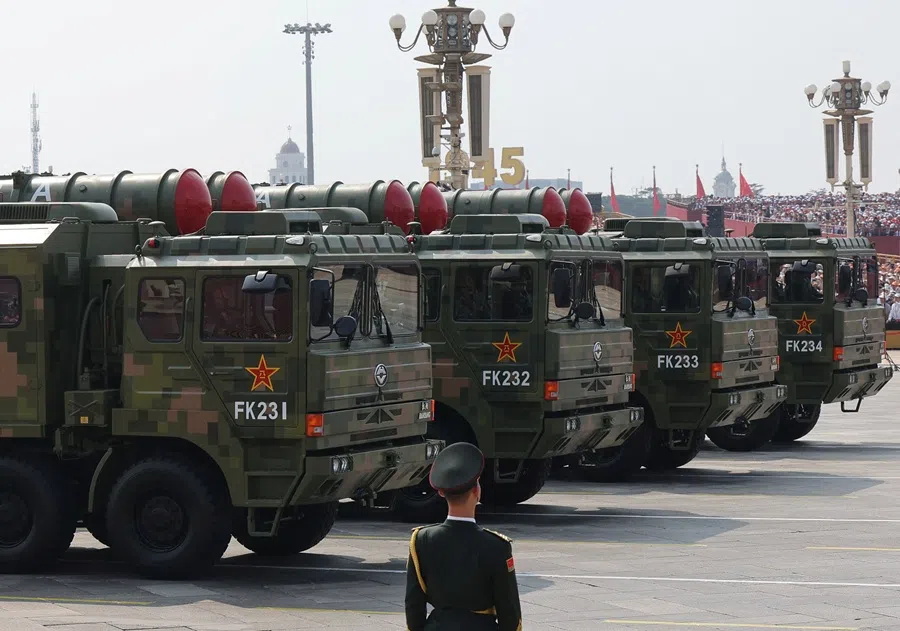
China is now the second-largest military by defence spending and the largest in scale by most measures. It boasts the world’s largest navy and has the most active duty troops. Each of its services has developed and acquired advanced technologies, including unmanned systems, directed energy, hypersonics and artificial intelligence, and it operates in all strategic domains, including space and cyberspace.
In the past decade, the PLA has developed and deployed a nuclear triad and is believed to be expanding its inventory of nuclear warheads by up to 100 per year. The PLA parade showcasing its most advanced capabilities sent a message to the world about China’s military might.
Transparency issues
What is unclear to the US and China’s neighbours is why China’s military has expanded so rapidly and to such an extent. This modernisation and expansion has not been accompanied by concurrent increase in transparency.
Official assurances of peaceful intent ring hollow when outsiders have no insights into the inner workings of China’s leadership and military, when the PLA is deployed to coerce and intimidate countries on its periphery. The Communist Party and its armed wing are obsessed with secrecy. The lack of openness fosters suspicion and mistrust.
A predictable result is what international relations scholars describe as a “security dilemma”, which occurs when one state takes action to increase its security, causing other states to fear for their own and respond by increasing their defences.
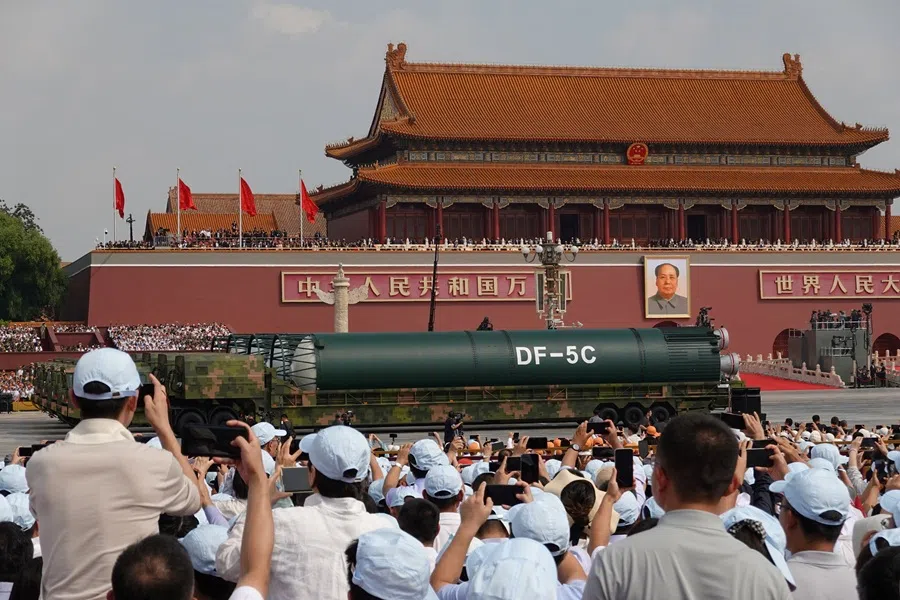
While there is extensive scholarly debate about whether security dilemmas are inexorable or escapable, it is safe to conclude that communication between two powers is beneficial for avoiding the worst consequences of misperception or the risk of miscalculation.
Little US-China military engagement
Military-to-military contacts between the US and China have atrophied over the past decade. China only holds exchanges when they feel the political atmosphere is good, rebuffing US requests to engage when Beijing is piqued at US actions. This on-again, off-again approach to engagement fosters distrust and reveals a fundamental difference between how Beijing and Washington see the value of military engagement.
Beijing may think they are sending a message to Washington by launching a parade of advanced military equipment, but that message is probably not getting through.
Beijing sees military-to-military relations as a reward for respecting China’s core interests. Washington sees channels of communication as a means of stabilising relations and reducing risks. The lack of sustained dialogue increases the risk of misperception, and it reduces Beijing’s ability to shape how Washington perceives China’s interests and behaviours.
Beijing may think they are sending a message to Washington by launching a parade of advanced military equipment, but that message is probably not getting through. Washington can clearly see the military buildup, the expansion of military capabilities, the threats to use force to settle disputes, and the use of military coercion against China’s neighbours. If Beijing wants to send a different message, it needs defence channels that are “all-weather”, not just when it wants.

When US-China military-to-military relations are high-functioning and healthy, they comprise four-levels of engagement at the senior-most, policy, functional and operational safety levels. High-level and policy dialogues exchange authoritative messages to reduce misperceptions and set agendas; functional dialogues build trust and manage the relationship; while operational exchanges, like the Military Maritime Consultative Agreement (MMCA) established in 1998, help reduce the risk of incidents.
High-level visits between the senior-most leaders are symbolic but substantive too. Unfortunately, they have been few and far between since 2018 when Secretary of Defence Jim Mattis visited China on one trip, and hosted Defence Minister Wei Fenghe on a visit to Washington later the same year. Reciprocal high-level visits result in hours of face-to-face meetings and, importantly, internal preparations for meetings which deepen knowledge, mutual understanding, and executive focus on managing the complex bilateral military relationship.
Brief meetings on the margins of regional dialogues like the Shangri-La Dialogue (SLD) and the ASEAN Defence Ministers Meeting-Plus (ADMM+) are not substitutes for the intensity of dedicated bilateral exchanges. But even those pull-aside meetings on the margins of multilateral meetings can be hard to come by.
Defence Minister Li Shangfu rebuffed US requests for a meeting at SLD in 2023. While Defence Minister Dong Jun met Secretary of Defence Lloyd Austin on the margins of the SLD in May 2024, he declined to meet at the ADMM+ meeting in Laos in November 2024. This sporadic approach to bilateral relations deepens frustration and distrust, and importantly, prevents the progression of discussions that could lead to stabilising outcomes.
Lack of regular military-to-military contacts impacts stability
The US Department of Defense’s annual report to Congress on China dutifully records military-to-military contacts and exchanges each year. The most recent report in 2024, chronicling the previous year’s engagements, reveals the deep frustration in Washington.

“In 2023, the PLA largely denied, cancelled, and ignored recurring bilateral engagements and DoD requests for communication until weeks before President Biden and PRC leader Xi Jinping met in November 2023. Following the leaders’ meeting… DoD and the PLA conducted several working level and senior-level exchanges at the end of 2023 and into 2024.”
The report notes that one Defense Telephone Link (DTL) call was held, while numerous other proposals, including the INDOPACOM Commander’s request to speak to his counterparts, were “refused, cancelled, or ignored”.
In the absence of dialogue, Washington is responding to China’s military expansion with their own transformation. Secretary Hegseth’s emphasis on lethality, and the rebranding of the Department of War are a rhetorical consequence of the security dilemma.
The report also emphasises the importance of recurring exchanges, which stabilise the bilateral relationship through the exchange of views on defence policy and mechanisms to enhance crisis prevention and management, including operational safety. The report dourly noted, “Executed: None.” Following the November 2023 meeting between Xi and Biden, Defense Policy Coordination Talks and a working group of the MMCA operational safety dialogue were held in spring 2024, after having “largely been dormant since 2020 or earlier”.
US ramps up its own military transformation
In the absence of dialogue, Washington is responding to China’s military expansion with their own transformation. Secretary Hegseth’s emphasis on lethality, and the rebranding of the Department of War are a rhetorical consequence of the security dilemma. Accelerated development, acquisition and integration of new technologies and capabilities tailored to a future war against a capable, advanced military is more tangible. All services are studying the PLA carefully, as well as lessons learned from the war in Ukraine.
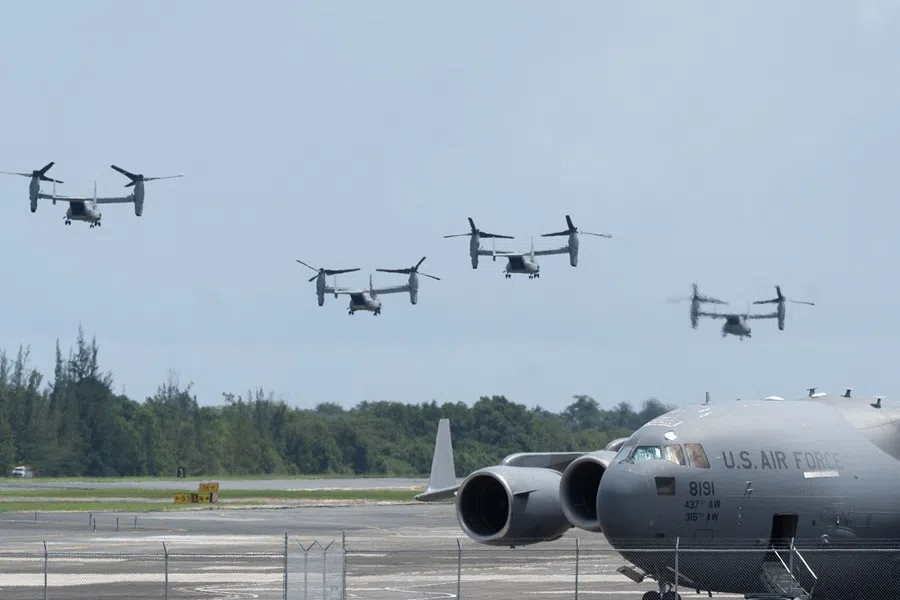
Major shifts are occurring as well. The US Marine Corps’ Force Design is perhaps the most dramatic, with the Marines giving up their tanks and artillery tubes, trading them in for anti-ship cruise missiles and rockets fielded by littoral combat regiments operating in small, mobile units in forward areas.
The Department of War is modernising its own nuclear triad with the new B-21 bomber, the Long-Range Standoff cruise missile and Sentinel Intercontinental Ballistic Missile which will replace the venerable Minuteman III ICBMs, while the Department of Energy is modernising the nation’s inventory of nuclear warheads. President Trump directed the establishment of the Golden Dome missile defence system.
Both countries are modernising and expanding their conventional and strategic forces for that fight. What will trigger that fight, and when it might happen is not as clear as Beijing’s preparations for the conflict.
The 3 September parade sent a clear signal to Washington that China is preparing to take Taiwan by force and fight a war against the US. Both countries are modernising and expanding their conventional and strategic forces for that fight. What will trigger that fight, and when it might happen is not as clear as Beijing’s preparations for the conflict.
What is clear is that the PLA is only willing to engage US counterparts when Xi Jinping orders it. It is also prepared to cut off contact when political tensions rise. The lack of sustained bilateral dialogue between the two militaries at senior-, policy-, and operational-levels fosters mutual distrust, increases the risk of misperception and miscalculation, and fuels the US-China security dilemma.
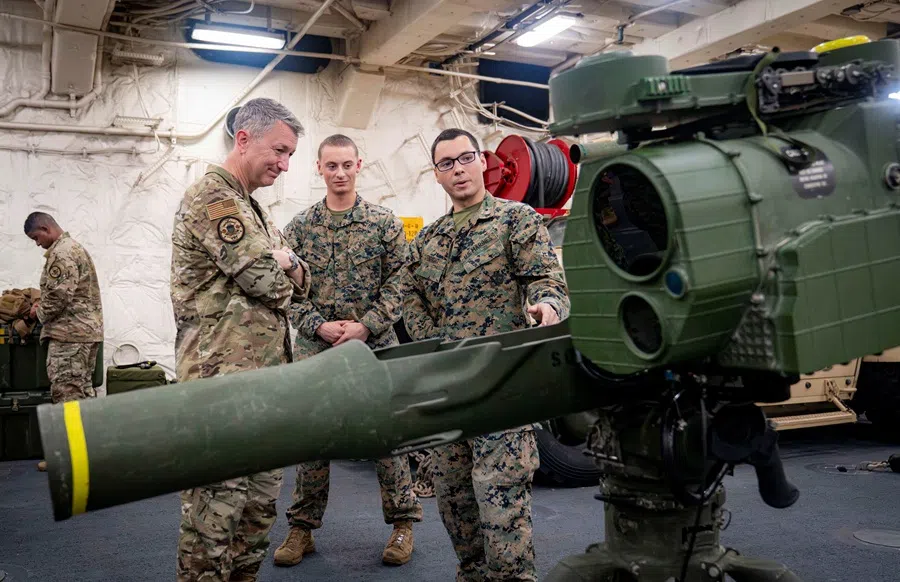
The fair-weather approach to exchanges also prevents the progression of discussion from stating respective policy positions and competing perceptions to more sustained, constructive discussions that could lead to confidence-building and stabilisation of the relationship.
Respect for China’s core interests precondition for dialogue
Successive US administrations have called for strategic stability talks with China, offering to discuss strategic nuclear stability, ballistic launch notifications and other confidence-building measures, but they have been routinely rejected because Beijing does not feel the “right conditions” for dialogue are present. Beijing’s message is clear: demonstrated respect for China’s core interests is a precondition for military dialogue and strategic stability.
Beijing does not seek sustained military-to-military dialogue as a means to stabilise the relationship and prevent conflict, as Washington does. Beijing offers dialogue as an incentive to Washington to give up its interests that are inimical to China’s. Washington has routinely rejected this approach as Secretary of Defense Lloyd Austin affirmed at the 2023 SLD, “The right time to talk is every time. And the right time to talk is now. Dialogue is not a reward. It is a necessity.”
The 3 September parade therefore sent a signal to Washington that China is committed to use force to achieve its political objectives and it is expanding and modernising its military towards that end. The lack of sustained and substantive military-to-military bilateral dialogue tragically contributes to the security dilemma and resulting instability arising from both sides’ respective military modernisation efforts.



